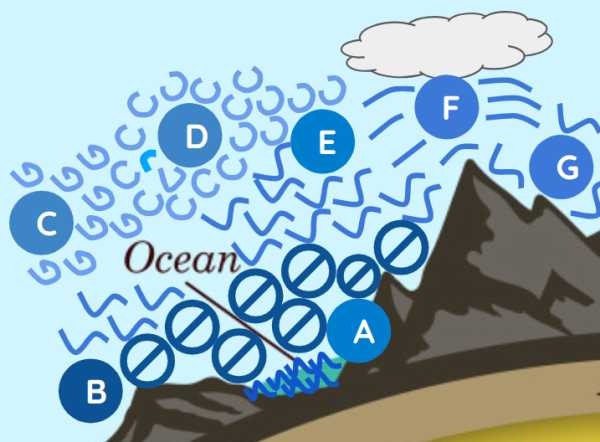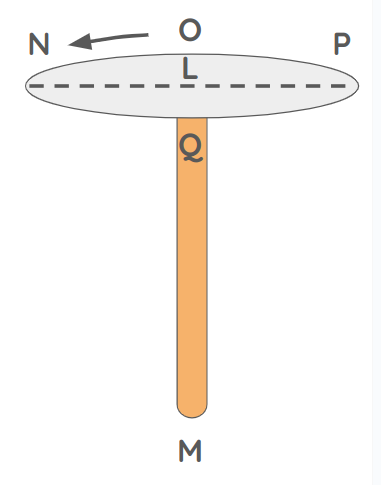Vapors and Exhalations
Table of Contents
This is similar to dust rising from a field when stirred by the feet of a passerby. Even though the grains of this dust are much larger and heavier than the small parts we are discussing, they still rise into the air—and in fact, they rise even higher when a large plain is filled with moving people, compared to when it is disturbed by a single person.
This should prevent surprise that the action of the sun lifts high the small particles of matter which make up vapors and exhalations, considering that its influence extends over half the Earth at a time and remains there throughout the entire day. Note that the small particles raised into the air by the sun generally have the same shape as those I’ve attributed to water—since no other shapes separate so easily from the bodies they inhabit.
These particular particles I will call vapors, to distinguish them from others with more irregular shapes, which I will limit to the name exhalations, as I know of no better term.
Among the exhalations, I will include those that have nearly the same shape as the parts of water but are finer and compose spirits or essential oils, because they can easily ignite. I will exclude those that are divided into many branching parts and are so subtle that they are only suited to make up the substance of air.
As for the slightly coarser ones, also divided in branches, it’s true they can hardly leave the hard bodies they are in on their own—but if fire spreads into these bodies, it drives them out as smoke. Likewise, when water seeps into their pores, it often dislodges them and carries them upward, just like wind passing through a hedge carries away leaves or straw that are tangled in the branches.
Or more precisely, like water itself in a distillation flask carries upward the small parts of oil that alchemists extract from dried plants by soaking them in water and distilling the mixture—causing the small amount of oil within to rise with the larger volume of water.
In fact, most of these particles are the same as those that normally compose the substance of such oils.
Also observe that vapors always occupy much more space than liquid water, even though they are made of the same particles.
The reason is:
When these particles form water, they move just strongly enough to bend and intertwine, sliding against one another—as shown in figure A.
But when they form vapor, their agitation is so intense that they spin rapidly in all directions, stretching fully in length.
Each particle repels those around it, pushing away others that attempt to enter the small sphere it describes—represented in figure B.
The sun or other causes can agitate the air-aether [space] and small earth-aether [matter] particles inside the pores of material bodies.
- The earth-aether particles are more strongly agitated than the air-aether.
The following earth-aether particles are easily separable:
- the small ones
- those shaped or situated in a separable way
This causes them to scatter and rise into the air simply because they cannot find any other place to go.
It is not because:
- they have an inherent inclination to ascend*
- the sun exerts a force drawing them upwards
Superphysics Note
This is similar to how dust in a field rises when it is pushed and agitated by the feet people passing by, making them go up into the air.
- More dust rises when more people walk on them.
The action of the sun raises vapors quite high, since the sun always shines over half of the earth and stays there all day.
These small particles raised into the air by the sun should mostly have the shape of water.
- This is because they are the most easily separable from the bodies that they are in.
These alone I will call “vapors”.
These are different from the more irregular shaped ones I call “exhalations” [ionized air], as I know no more proper term.
Included in the exhalations are those with nearly the same shape as the water particles but are more subtle.
- These make up spirits or life waters that can easily catch fire.
I will exclude the earth-aether particles that make up the physical air that are:
- divided into several branches
- so subtle
| Physics Name | Cartesian Name |
|---|---|
| Water Vapor | Vapors |
| Ionized Air | Exhalations |
| Hydrocarbons | Spirit-Exhalations |
There are earth-aether particles [carbon] that are a bit coarser and also divided into branches.
- They cannot leave the hard bodies which they are a part of by themselves.
- But they can be driven by fire, such as the fire which drives them out as smoke.
When water slips into their pores, the water can often release these earth-aether particles and carry them up with it.
- This happens in the same way that the wind, passing through a hedge, carries away the leaves or straw entwined among its branches.
Expansion of Water-Vapor from Heat or Agitation
Vapors always occupy much more space than water even if they are made of the same small particles.
Water particles only move strongly enough to bend, intertwine, and slide against each other, as represented at A.
When they become vapor, their agitation is so great that they quickly turn around in all directions and stretch out to their full length.*
- Each has the force to push away all its similar particles that tend to enter its small sphere.
- This is represented at
B.
Superphysics Note

This is similar to how, if you spin the pivot LM fast enough, cord NP will stand in the air, straight and stretched.
It will occupy all the space within the circle NOPQ. In this way, bodies within that circle are immediately struck and driven out.

However, if you move it slowly, it will coil around the pivot itself. It will no longer occupy as much space.
These vapors can be:
- compressed or expanded
- hot or cold
- transparent or obscure
- humid or dry
When their particles get cooler, they no longer stretch out in a straight line. They begin to bend and contract as shown as C and D.
Vapors become denser or more compressed in the 3 scenarios:
-
When the vapors cool down and are compressed as seen near
CandD. -
When the vapors are between mountains or various winds or under some clouds.
- This prevents them from expanding into as much space as their agitation requires.
- This is also seen at
E.
- When they use most of their agitation to move together in the same direction.
- And so they no longer spin around as strongly as usual, as seen at
F. - Sometimes they emerge from space
E, generating a wind that blows towardsG.

If the vapor that is near E is as agitated as that near B, then it will be much hotter.
- This is because its particles, being more tightly packed, have more force.
- This is similar to how the heat of glowing iron is much more intense than that of embers or flame.
Assuming the vapor at E is as agitated as that at B. Then it becomes much hotter because its particles are more compressed, and have more force.
This is similar to how the heat of red-hot iron is much more intense than that of coals or flames.
This is why we often feel a stronger and more stifling [humid?] heat in summer when the air is calm and equally pressed from all sides as rainclouds, than when it is clearer and more serene [less humid?].
The vapor at C is colder than that at B, even though its parts are slightly more compressed. This is because they are much less agitated.
Conversely, the vapor at D is hotter because its particles are much more compressed and only slightly less agitated.
The vapor at F is colder than that at E, although its particles are not less compressed nor less agitated.
- This is because they are more aligned in moving in the same direction.
- This prevents them from shaking the small particles of other bodies as much.
This is like how a strong wind that always blows in the same direction does not shake the leaves and branches of a forest as much as a weaker one that is less steady.
Heat consists in this agitation of the tiny earth-aether particles.
If you blow hard enough on your fingers held together, the breath coming out of your mouth will seem cold over the top of your hand.
- This is because it moves very fast and with even force.
- This causes little agitation
Whereas, you will feel it quite warm between your fingers.
- This is because it moves more unevenly and slowly agitating their tiny particles more.
In the same way, we feel our breath is:
- warm when blowing with the mouth wide open,
- cold when blowing with it almost closed.
This is why:
- violent winds are cold
- warm winds are fast